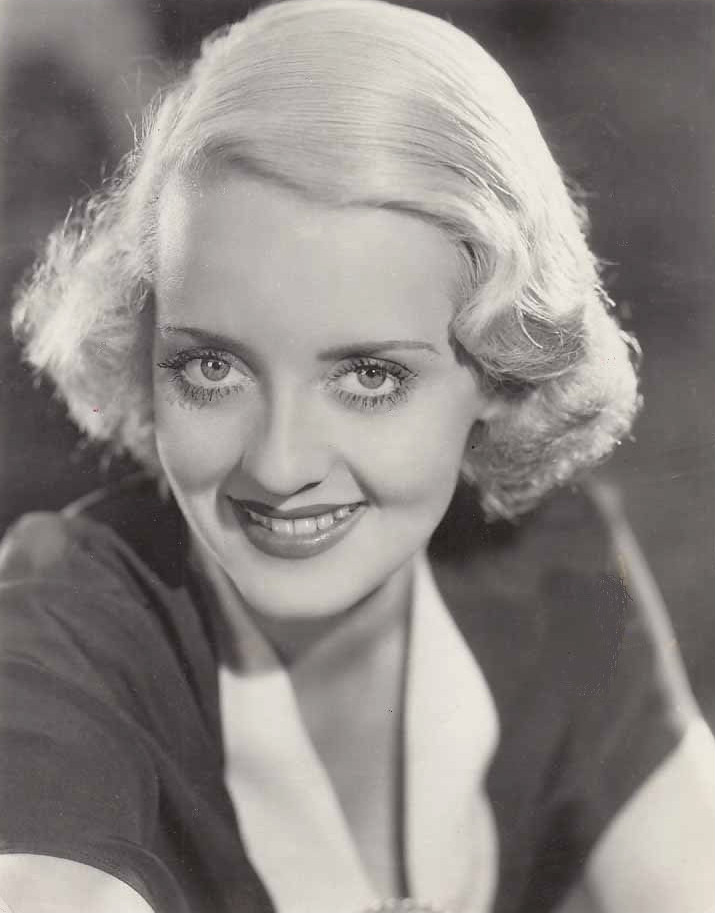|
Helen Menken
Helen Menken (née Meinken; December 12, 1901 – March 27, 1966) was an American stage actress. Early years Menken was born in New York City to a German-French father, Frederick Meinken, and an Irish-born mother, Mary Madden. Her parents were deaf, and her early communication came via sign language. She did not begin talking until age 4. Her sister, Grace Menken, was also an actress. At age 12, she was sent to a school in Brighton, England. Stage Before she turned 14, Menken performed in vaudeville for a season, primarily playing character parts with her brother-in-law. A dispute when the troupe was in Dallas led to her walking out and joining a Shakespearean company that was also in Dallas. Billed as Helen Meinken, Menken acted in 1915 in Brooklyn and in 1916 with the Orpheum Players in Reading, Pennsylvania. She made her Broadway theatre debut as a teenage actress in ''Parlor, Bedroom and Bath'' (1917). Her greatest stage triumphs were ''Seventh Heaven'' in 1922–1924 (J ... [...More Info...] [...Related Items...] OR: [Wikipedia] [Google] [Baidu] |
New York City
New York, often called New York City or NYC, is the List of United States cities by population, most populous city in the United States. With a 2020 population of 8,804,190 distributed over , New York City is also the List of United States cities by population density, most densely populated major city in the United States, and is more than twice as populous as second-place Los Angeles. New York City lies at the southern tip of New York (state), New York State, and constitutes the geographical and demographic center of both the Northeast megalopolis and the New York metropolitan area, the largest metropolitan area in the world by urban area, urban landmass. With over 20.1 million people in its metropolitan statistical area and 23.5 million in its combined statistical area as of 2020, New York is one of the world's most populous Megacity, megacities, and over 58 million people live within of the city. New York City is a global city, global Culture of New ... [...More Info...] [...Related Items...] OR: [Wikipedia] [Google] [Baidu] |
Bette Davis
Ruth Elizabeth "Bette" Davis (; April 5, 1908 – October 6, 1989) was an American actress with a career spanning more than 50 years and 100 acting credits. She was noted for playing unsympathetic, sardonic characters, and was famous for her performances in a range of film genres, from contemporary crime melodramas to historical films, suspense horror, and occasional comedies, although her greater successes were in romantic dramas. A recipient of two Academy Awards, she was the first thespian to accrue ten nominations. Bette Davis appeared on Broadway in New York, then the 22-year-old Davis moved to Hollywood in 1930. After some unsuccessful films, she had her critical breakthrough playing a vulgar waitress in ''Of Human Bondage'' (1934) although, contentiously, she was not among the three nominees for the Academy Award for Best Actress that year. The next year, her performance as a down-and-out actress in ''Dangerous'' (1935) did land Davis her first Best Actress nomination, ... [...More Info...] [...Related Items...] OR: [Wikipedia] [Google] [Baidu] |
Gramercy Park Hotel
Gramercy Park Hotel was a luxury hotel located at 2 Lexington Avenue, in the Gramercy Park neighborhood of Manhattan, New York City, adjacent to the park of the same name. It was known for its rich history. __FORCETOC__ History Gramercy Park Hotel was designed by Robert T. Lyons and built by the developer brothers Bing & Bing from 1924–1925, with a westward extension along Gramercy Park North – a continuation of East 21st Street – designed by the firm of Thompson & Churchill and built in 1929–1930. Both wings were designed in Renaissance Revival style."Gramercy Park Hotel" on the Gramercy Park Neighborhood Associates website The hotel occupies the site of the former homes of the flamboyant |
Special Tony Award
The Special Tony Award category includes the Lifetime Achievement Tony Award and the Special Tony Award. These are non-competitive honorary awards, and the titles have changed over the years. The Tony Award for Lifetime Achievement in the Theatre is to "honor an individual for the body of his or her work." tonyawards.com, accessed April 7, 2011 (The was a competitive award, given from 2001 to 2009.) Another non-competitive Tony award is the Tony Honors for Excellence in Th ...
[...More Info...] [...Related Items...] OR: [Wikipedia] [Google] [Baidu] |
Library Of Congress
The Library of Congress (LOC) is the research library that officially serves the United States Congress and is the ''de facto'' national library of the United States. It is the oldest federal cultural institution in the country. The library is housed in three buildings on Capitol Hill in Washington, D.C.; it also maintains a conservation center in Culpeper, Virginia. The library's functions are overseen by the Librarian of Congress, and its buildings are maintained by the Architect of the Capitol. The Library of Congress is one of the largest libraries in the world. Its "collections are universal, not limited by subject, format, or national boundary, and include research materials from all parts of the world and in more than 470 languages." Congress moved to Washington, D.C., in 1800 after holding sessions for eleven years in the temporary national capitals in New York City and Philadelphia. In both cities, members of the U.S. Congress had access to the sizable collection ... [...More Info...] [...Related Items...] OR: [Wikipedia] [Google] [Baidu] |
Sound-on-film
Sound-on-film is a class of sound film processes where the sound accompanying a picture is recorded on photographic film, usually, but not always, the same strip of film carrying the picture. Sound-on-film processes can either record an analog sound track or digital sound track, and may record the signal either optically or magnetically. Earlier technologies were sound-on-disc, meaning the film's soundtrack would be on a separate phonograph record. History Sound on film can be dated back to the early 1880s, when Charles E. Fritts filed a patent claiming the idea. In 1923 a patent was filed by E. E. Ries, for a variable density soundtrack recording, which was submitted to the SMPE (now SMPTE), which used the mercury vapor lamp as a modulating device to create a variable-density soundtrack. Later, Case Laboratories and Lee De Forest attempted to commercialize this process, when they developed an Aeolite glow lamp, which was deployed at Movietone Newsreel at the Roxy Theatre ... [...More Info...] [...Related Items...] OR: [Wikipedia] [Google] [Baidu] |
Phonofilm
Phonofilm is an optical sound-on-film system developed by inventors Lee de Forest and Theodore Case in the early 1920s. Introduction In 1919 and 1920, Lee De Forest, inventor of the audion tube, filed his first patents on a sound-on-film process, DeForest Phonofilm, which recorded sound directly onto film as parallel lines. These parallel lines photographically recorded electrical waveforms from a microphone, which were translated back into sound waves when the movie was projected. Some sources say that DeForest improved on the work of Finnish inventor Eric Tigerstedt — who was granted German patent 309.536 on 28 July 1914 for his sound-on-film work — and on the Tri-Ergon Exchange, patented in 1919 by German inventors Josef Engl, Hans Vogt, and Joseph Massole. The Phonofilm system, which recorded synchronized sound directly onto film, was used to record vaudeville acts, musical numbers, political speeches, and opera singers. The quality of Phonofilm was poor at first, improved ... [...More Info...] [...Related Items...] OR: [Wikipedia] [Google] [Baidu] |
Lee DeForest
Lee de Forest (August 26, 1873 – June 30, 1961) was an American inventor and a fundamentally important early pioneer in electronics. He invented the first electronic device for controlling current flow; the three-element "Audion" triode vacuum tube in 1906. This started the Electronic Age, and enabled the development of the electronic amplifier and oscillator. These made radio broadcasting and long distance telephone lines possible, and led to the development of talking motion pictures, among countless other applications. He had over 300 patents worldwide, but also a tumultuous career— he boasted that he made, then lost, four fortunes. He was also involved in several major patent lawsuits, spent a substantial part of his income on legal bills, and was even tried (and acquitted) for mail fraud. Despite this, he was recognised for his pioneering work with the 1922 IEEE Medal of Honor, the 1923 Franklin Institute Elliott Cresson Medal and the 1946 American Institute of El ... [...More Info...] [...Related Items...] OR: [Wikipedia] [Google] [Baidu] |
Second Husband
''Second Husband'' is a radio soap opera in the United States.Buxton, Frank and Owen, Bill (1972). ''The Big Broadcast: 1920–1950''. The Viking Press. SBN 670-16240-x. P. 209. The program told " e dramatic story of Brenda Cummings and the problems that arise within her family when she marries Grant Cummings, her second husband."Terrace, Vincent (1981), ''Radio's Golden Years: The Encyclopedia of Radio Programs 1930–1960''. A.S. Barnes & Company, Inc. . Pp. 234–235. Widow Brenda's marriage to wealthy Grant Cummings produced problems on two levels—her son and daughter didn't want to accept Grant as their new father, and Brenda wanted a career as a movie actress, which Grant opposed.Cox, Jim (2005). ''Historical Dictionary of American Radio Soap Operas''. Scarecrow Press, Inc. . Pp. 200–201. ''Second Husband'' was one of 35 radio series – many of them soap operas – produced by the husband-and-wife team Frank and Anne Hummert from 1931 through 1960.Sterling, Christopher ... [...More Info...] [...Related Items...] OR: [Wikipedia] [Google] [Baidu] |
American Theatre Wing
The American Theatre Wing (the Wing for short) is a New York City–based non-profit organization "dedicated to supporting excellence and education in theatre", according to its mission statement. Originally known as the Stage Women's War Relief during World War I, it later became a part of the World War II Allied Relief Fund under its current name. The ATW created and sponsors the Tony Awards in theatrical arts. Background Stage Women's War Relief Stage Women's War Relief was founded in 1917 to organize charitable giving in support of the war effort. Its founders, led by playwright and director Rachel Crothers, included the actress and playwright Louise Closser Hale and actresses Dorothy Donnelly, Josephine Hull, Minnie Dupree, Elizabeth Tyree and Louise Drew. The organization established workrooms for sewing uniforms and other garments (with total output totaling 1,863,645 articles), set up clothing and food collection centers, sold Liberty Bonds, and opened a canteen on Br ... [...More Info...] [...Related Items...] OR: [Wikipedia] [Google] [Baidu] |







